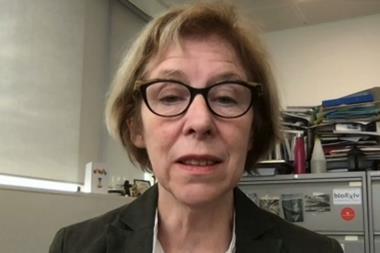The Academic Parity Movement supports researchers at risk of discrimination and abuse in academia

A sense of dread washed over me as I read the first few words, ‘This letter is to inform you that your position, and therefore your scholar J-1 visa, has been revoked … effective immediately.’ That was it. I had worked hard all year, but when I refused to sign away my intellectual property and authorship rights to the papers I was working on for the past couple of years, I was not thinking that I might lose it all. The image of my wife and newborn flashed through my mind. I stared at the phone in my hand, pushing worries about how I could pay the bills without my lab job and leave the country aside, instead wondering how I could call them and share the news.
– Anonymous target of academic bullying
Research suggests that more than one in ten scientists have experienced academic bullying at the hands of a more senior faculty colleague or supervisor. Defined as repeated acts of discrimination, incivility, or harassment against a researcher, academic bullying can range from verbal abuse such as aggressive or rude language and micro-aggressions, to threats such as visa cancellation, reducing or redirecting funding, and omitting credit for work. In extreme cases, targets can be subject to departmental abuse in which other lab workers or members of the administration are encouraged to remain complacent to the mistreatment, or even join in. Underrepresented groups and scholars of colour are especially vulnerable as pre-existing prejudice and systematic oppression can compound the power imbalance between them and their abusers.
In the short-term, targets of academic bullying may feel anxiety and low levels of job satisfaction. If left unresolved, this can make them more prone to making avoidable mistakes (such as medical errors). Targets are often pressured to work longer hours than their colleagues to produce exceptional results. This can lead to burnout, or cause researchers to feel they have to breach scientific integrity to keep their position.
This toxic culture must end now
It is difficult for targets to report incidents of bullying by senior people for fear of retaliation. Abusive supervisors typically have more power and stability in the institution than their targets. A biased administration may protect well-funded or highly regarded supervisors, or overlook the case out of fear that it may tarnish the institution’s reputation.
There is no standard guide to follow if a supervisor is found guilty of academic bullying, thus, consequences vary in severity. Conversely, targets of academic bullying are at risk of losing their current or future positions, funding or student visa if they speak out.
The toxic culture that diminishes a scholar of colour’s bright idea, makes it hard for a woman to secure funding for their project, or overlooks presenting an award to a queer student conducting cutting edge research must end now. Academic institutions must proactively be held accountable for creating safe environments for their scholars to diminish bullying incidents, and protect the rights of targets when incidents arise.
In 2019, we founded the Academic Parity Movement, a non-profit organisation, with the goal of bridging the gap between all academic stakeholders – including scholars, institutions and funding agencies – to solve the long-overdue issue of bullying in the scientific community. In particular, we seek to empower historically underrepresented groups and support students, postdocs and junior faculty members caught in a power struggle and at risk of discrimination from their supervisors. Academic bullying is a diverse issue that needs a diverse range of perspectives to address it.
A major cultural and institutional shift is necessary to cut bullying at its roots and transition to a more equitable academic environment globally. To assist with this, we are working with a diverse panel of advisors to provide guidelines institutions can use to make academic environments safer and resolve bullying cases. To raise awareness of academic discrimination and bullying, we have published over a dozen articles in the past year, which we hope will increase research into the problem, and in March we launched our first annual international STEM Bullying workshop. Leaders in the field of acadmic discrimination and bullying spoke at the event, attended by hundreds of scholars. We also provide free support to targets of academic bullying and discrimination through our website; experienced professionals on our team guide individuals as they pursue justice for their case.
Ultimately, with the help and co-operation of members of the scientific community and advocates, we plan to support scholars caught in a power struggle to diminish bullying behaviour, and protect scientific integrity in academia.
The saying ‘education is the great equaliser’ cannot be true when some scholars are systematically held back by discrimination and academic bullying. However, by ensuring that everyone is treated justly and feel safe in their academic environment, we can take a step towards equity, inclusion, and diversity by balancing the field.












No comments yet